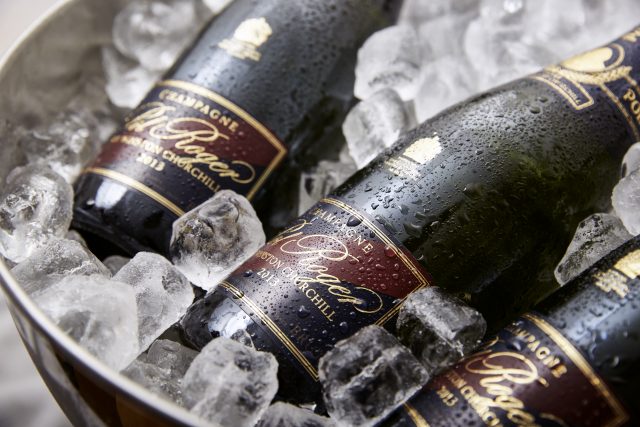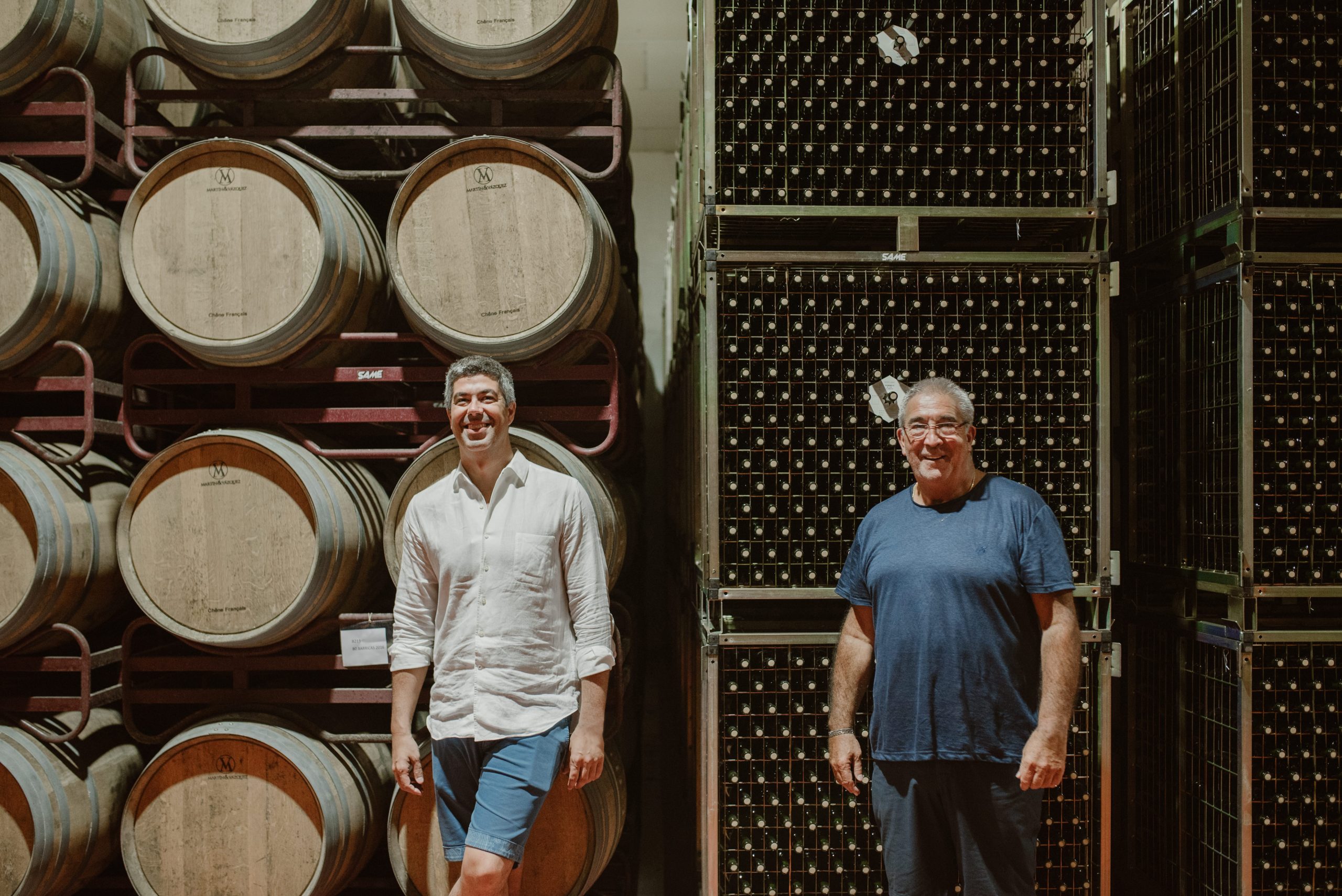Pol Roger to unveil new £50 million production facility in 2024
Champagne producer Pol Roger gave the drinks business a sneak peek of its high-tech production facility that has been three years and £50 million in the making.

“It’s almost up and running! We’re just moving everything across now,” Pol Roger’s managing director Laurent d’Harcourt tells db, his excitement palpable as he throws open the door to a new building, the construction of which has been at the top of the agenda at Pol’s HQ on the Avenue de Champagne for the last three years.
Having surpassed the 1.5 million annual bottle sales mark, Pol Roger was in need of more storage, and a tech upgrade to facilitate a slicker, speedier operation to match its sleek bottle designs and elegant cuvées.
With Pol already squirrelling away a more extensive number of back vintages in its cellar than many other Champagne houses, space was at a premium, despite its 10km of winding underground tunnels.
Behind Pol Roger’s commitment to keeping older vintages lies a passion for demonstrating that Champagnes can be aged for considerably longer than the five-year timeframe in which we are usually encouraged to drink our fizz. d’Harcourt is able to pluck a 1911 bottle out of the cellar and yet quips: “We are a new Champagne house. We have only been here for about 174 years…”
In fact Pol Roger’s 175th birthday falls next year, and as part of its celebrations, the maison will be officially launching the new production site to the trade, with a presentation due to take place in April.
“We started thinking about it almost 10 years ago,” says d’Harcourt of the building project. “We got the green light from our shareholders in 2019 and began construction in 2020. Then almost immediately everything was shut down because of Covid and we were left with four cranes in place…”
Disgorgement, packaging and labelling will all take place at the new facility, aided by a a “multi-million pound” robotic machine made by German company Schubert.
Bottles of Pol Roger NV glide smoothly along on a conveyor belt, while a smart camera snaps an image of each and every bottle in order to gauge the positioning of the neck foil. A mechanical ‘hand’ then deftly rotates each bottle… 1cm to the right, 2cm to the left… to ensure that when a second grabber picks up the wine and places it gently into a 3-bottle wooden case, the Pol Roger logo faces upwards in every instance. It’s the Rolls Royce of wine packing.
With Pol exporting 85% of its total production, the house wants to guarantee that whether someone is opening a case of Pol Roger in London or Hong Kong, they will be getting the same first tantalising glimpse.
“Even non-vintage has to look smart” says James Simpson, managing director, Pol Roger Portfolio, as he watches the bottles being efficiently packed like a father proudly watching his kids take laps of the pool.
“Pol Roger NV is the flagship of the house. If it’s not consistent you lose your customers, your admirers,” adds d’Harcourt, emphasising the attention to detail for every expression that leaves the facility. From 2024, all wines will be shipped from the new building.
A labelling room reminiscent of a cigar lounge houses a library archive of every front label ever sported by a Pol Roger bottle. Magnums continue to be hand-labelled on-site by members of the team, though a clever new piece of kit allows the heavy bottles to be suctioned up from the floor and deposited on a table for the person in question, saving them the exertion.
With the 2023 Champagne harvest having the heaviest bunches of grape on record, the additional space could not have come at a better time for Pol Roger. The only year when perhaps the harvest was larger was 1970 when, according to d’Harcourt, “we had to store some of our wines in big water reserves because the harvest was so huge…”
“We’ve been investing during the last few years to be able to face the storage challenge,” he explains. “This year the bunches were so big, and there were so many grapes on the vines. Instead of the usual two to three-week harvest, it took less than two weeks. We had a fantastic spring, but then you have to get the balance and the acidity right. Sometimes you have a fantastic surprise, but I’m not sure we are going to declare a vintage this year.”
If he were a betting man, d’Harcourt would put it all on 2019.
“2019 is going to be our next big vintage. I am quite confident,” he tells db.
Despite the extra storage that the new building allows, d’Harcourt is nonetheless keen to stress that Pol Roger does not plan to grow “too much”.
Partner Content
“In the next 10 years we will see some growth but the Champagne region is selling what it is producing so there is no more availability to source from friends or neighbours.”
The construction of the new facility follows a considerable revamp in the winery, which took place in 2008. During this overhaul, Pol Roger installed a higher number of smaller tanks (the tiniest contains around 25 hectolitres of wine) to be able to produce in isolation more diverse components of the final blend.
“It gives us more possibility and helps make our wines more complex,” says d’Harcourt. “As with painting, the more colours you have the more complex wine you can make. It gives us more precision in our winemaking.”
In 1900, a significant chunk of Pol Roger’s cellared wines were buried underneath the rubble when part of the cellar suddenly collapsed without warning. Between 1 million and 1.5 million bottles were lost in the disaster at a time when the total volume of the Champagne region was only around 30 million bottles per year. By contrast, total Champagne shipments for 2023 are forecast to reach around 314m bottles, according to the Comité Champagne.
“In 2018 we were investigating and found a small number of bottles buried under the collapse,” said d’Harcourt. “We have been offering these occasionally at charity auctions, and those with winning bids must come here to Pol Roger taste it.”
The time of the collapse is by no means the only tense period the old cellars have witnessed. Beside the original steel doors leading down to the cellar a weighty steel bar is propped up against the wall. This was used, d’Harcourt recounts, to secure the cellar against revolutionaries who in 1911 embarked on a looting spree of Champenois properties. “Many vignerons had to protect their cellars as people were breaking in and smashing all the bottles,” he says.
Épernay has come a long way since then, and to help ensure the future of the Champagne region, sustainability has been built into the blueprint of the new Pol Roger building from the get-go. A system enables rain water to be collected from the roof to irrigate the freshly landscaped gardens, and the construction “will be run on biomass energy in the future,” says d’Harcourt.
“A project like this is not something you can repeat. So it is an investment for the next 30-40 years. The shareholders have given us the green light to invest, and we are doing so in pursuit of excellence,” he says.
Related news
Castel Group leadership coup escalates
For the twelfth day of Christmas...
Zuccardi Valle de Uco: textured, unique and revolutionary wines




